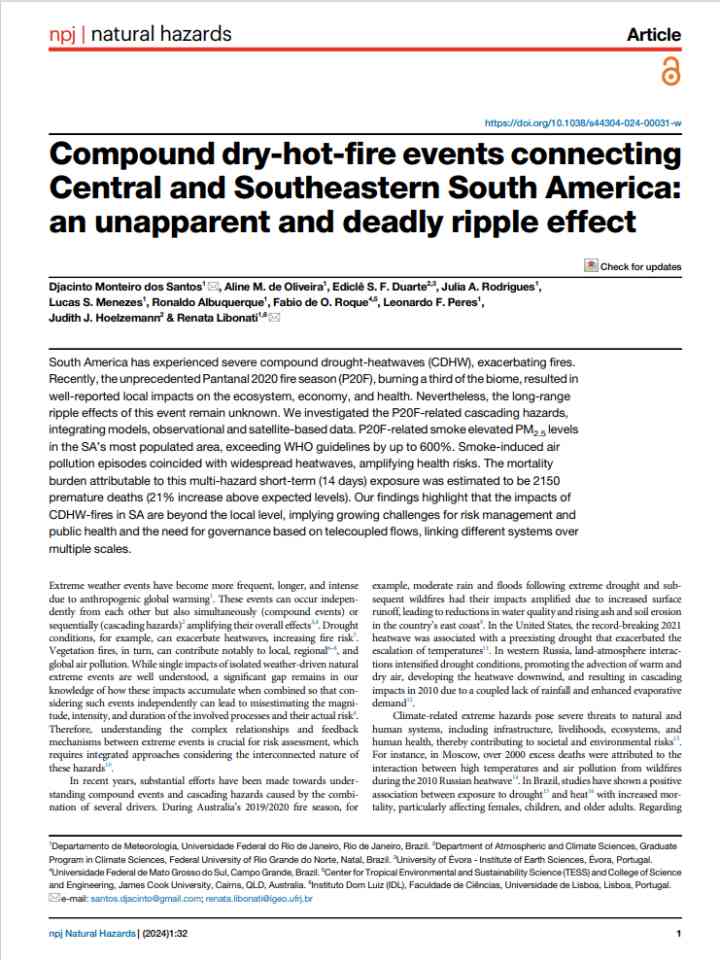Compound dry-hot-fire events connecting Central and Southeastern South America: an unapparent and deadly ripple effect
Source
This study integrates models, observational, and satellite data to assess the cascading hazards triggered by the 2020 Pantanal fire season (P20F) in South America, which burned approximately one-third of the Pantanal biome, had far-reaching impacts on ecosystems, the economy, and public health. Results show that smoke from the fires elevated PM2.5 levels in South America’s most populated regions, exceeding WHO guidelines by up to 600%. These pollution episodes coincided with heatwaves, increasing health risks and resulting in an estimated 2,150 premature deaths—a 21% rise above expected levels. Findings underscore that the effects of compound drought-heatwave fires (CDHW) extend beyond local areas, posing complex challenges for risk management and public health.
Key outputs are as follow:
- This study reveals that CDHW events like the 2020 Pantanal fires have cross-regional effects, emphasizing the need for multi-scale analysis and response.
- Smoke from P20F raised PM2.5 levels across populated areas in South America, exceeding WHO guidelines by up to 600%.
- The combination of smoke and heatwave conditions increased health risks, resulting in around 2,150 premature deaths—21% above normal levels.
- It is important to have governance approaches that incorporate telecoupled systems, addressing interconnected risks across multiple regions.
Explore further
Country and region
Americas

ISBN/ISSN/DOI
10.1038/s44304-024-00031-w (DOI)
Number of pages
13 p.
Publication year
2024